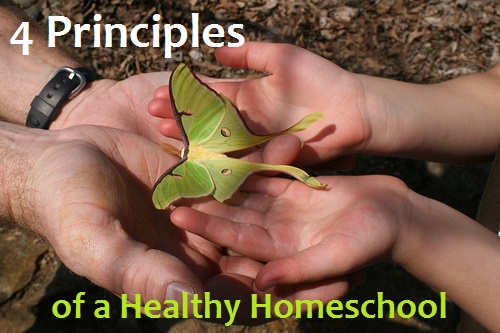How to give kids a great education

Not just drill, not just workbooks (though there is a place for both), but materials that help make connections between what is being learned and how it fits into this glorious time and space we inhabit.
2. Follow inspiration whenever and wherever she leads (she is not a lengthy visitor)
If you follow inspiration when it hits (“Hey, let’s go bird watching at the Nature Center today—the sun is out!”), you will bring joy and freedom into your homeschool. If you ignore inspired ideas in favor of “the schedule,” the surprise and sparkle of learning will fade. Don’t worry. No one is inspired every day.
3. Create a predictable, pleasant routine for when inspiration flags (most of your days)
Keep it steady, vary it with context (change the sequence of what you do, add special foods or drinks, fill out pages on the back deck or in front of a fire, go to the library or coffee shop once in a while), follow Charlotte Mason’s “short lessons” principle—full attention, commitment to excellence—stop! even if only after a couple of minutes. Let your days begin the same way each day.
4. Expose your children to a wide variety of experiences, subject matter, life skills, and places
Get out there! Meet people unlike you, take up sports you don’t know how to play, go to plays, learn to build or bake or sculpt or garden, see a ballet or an opera, toy with foreign languages or learn one, visit all kinds of places (places of worship, historical sites, courthouses, basketball arenas, ice skating rinks, music halls, factories, Little Saigon, foreign countries, farms, cities, skyscrapers, battle fields, a dance studio, your state capitol, a college campus…). Create vision for what it means to be an adult—let your children SEE adulthood in action in all the places it happens.
If you do these things for a decade or more, your kids will get a great education!
Image by woodleywonderworks


















[…] 4 Principles of a Healthy Homeschool […]